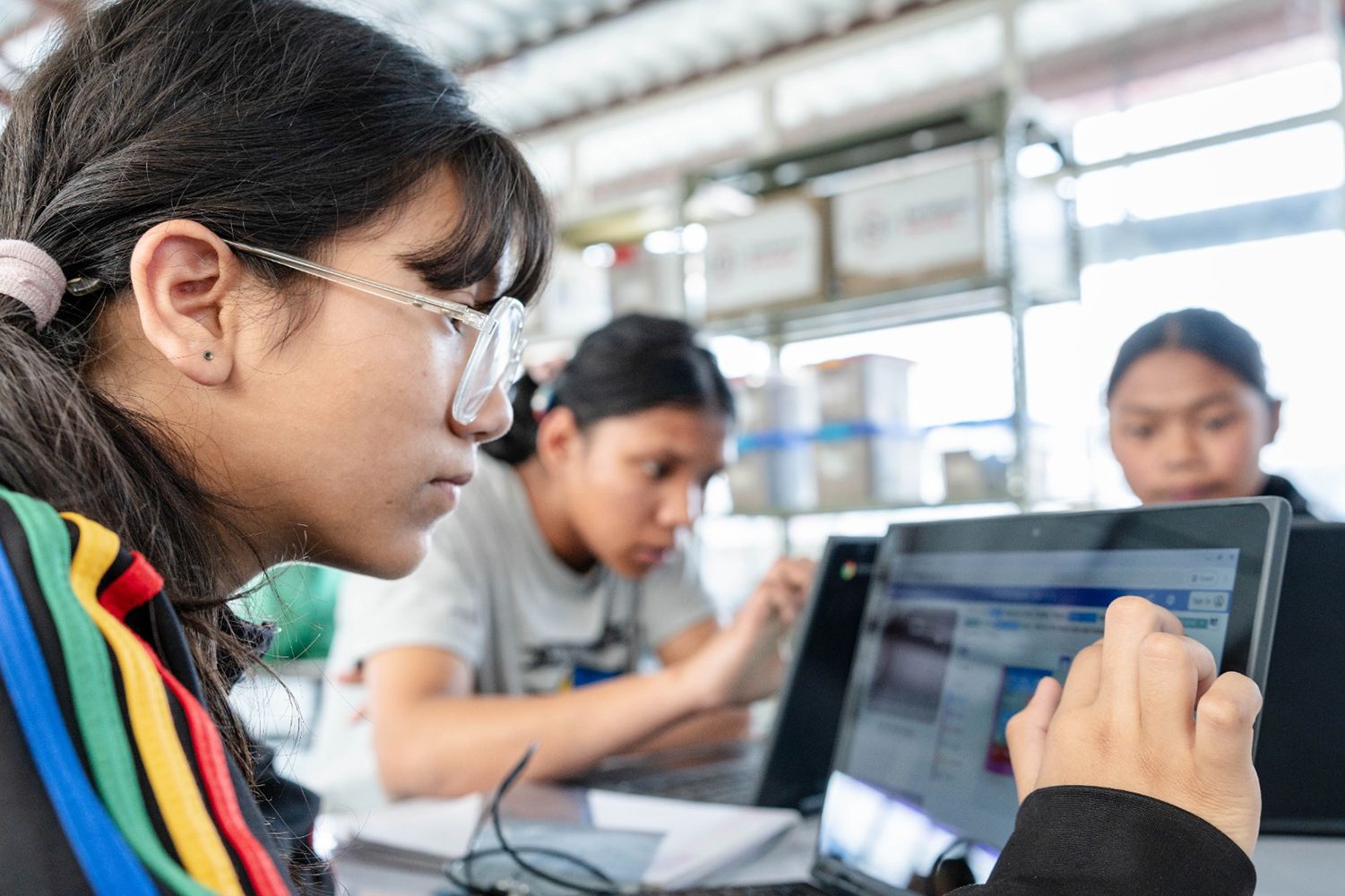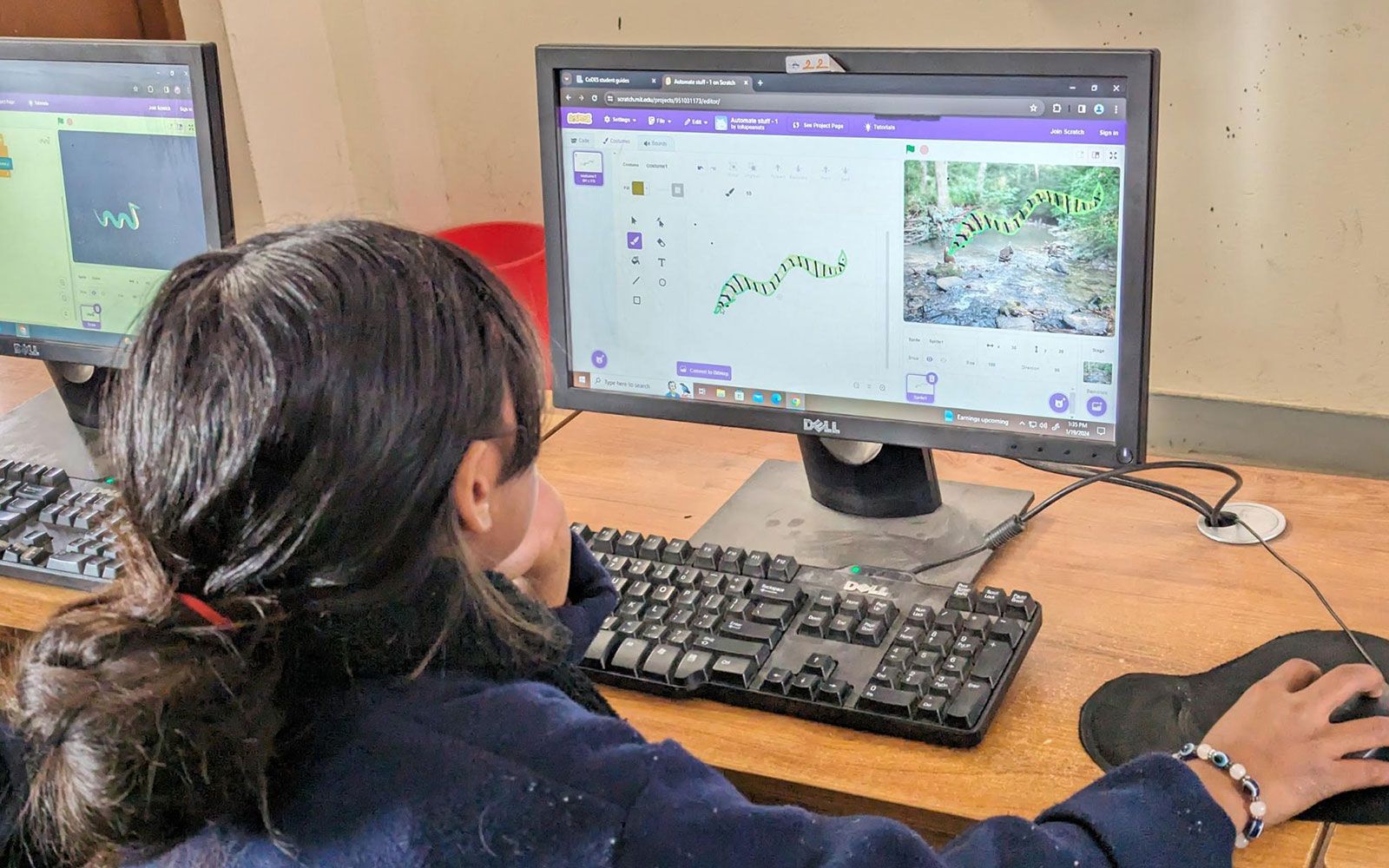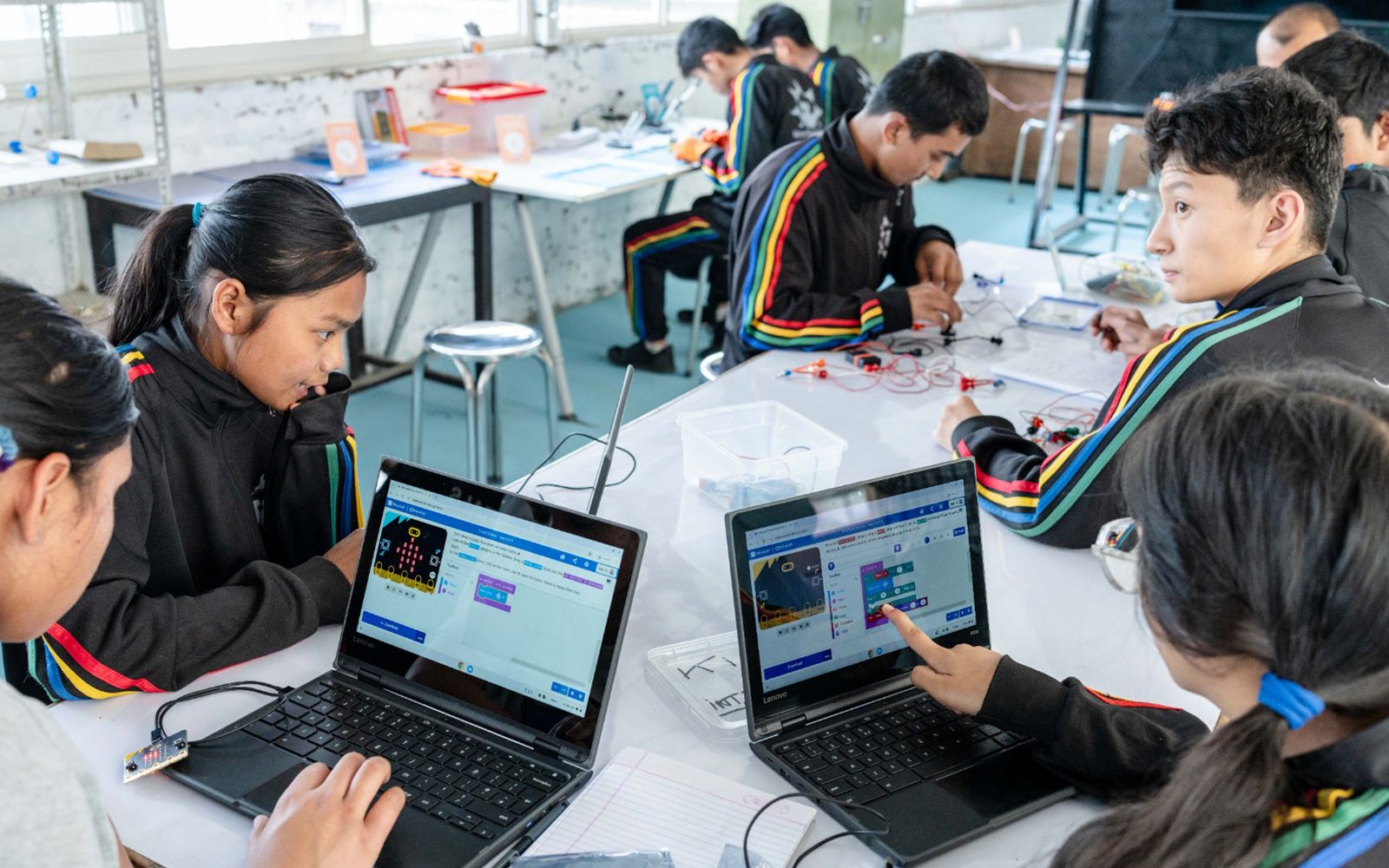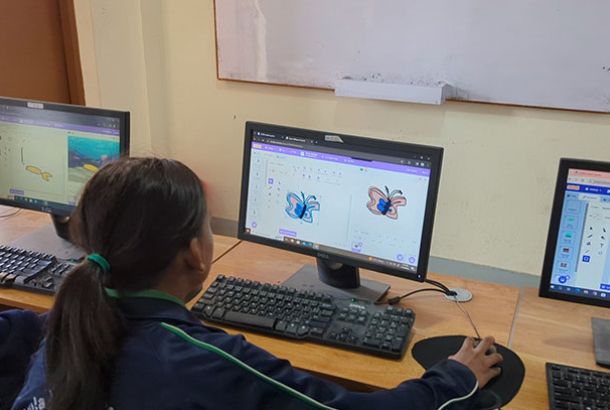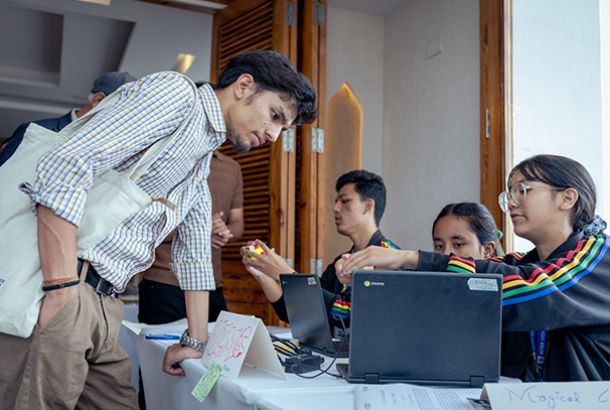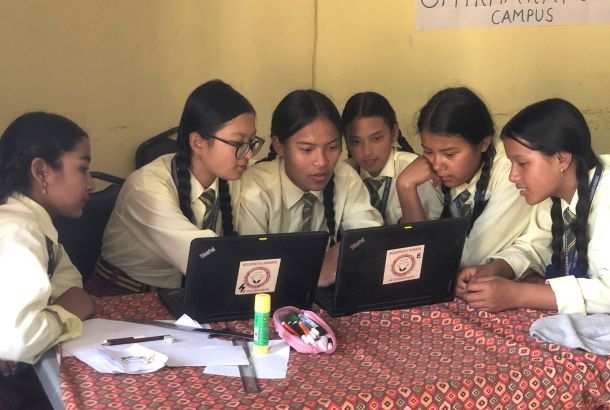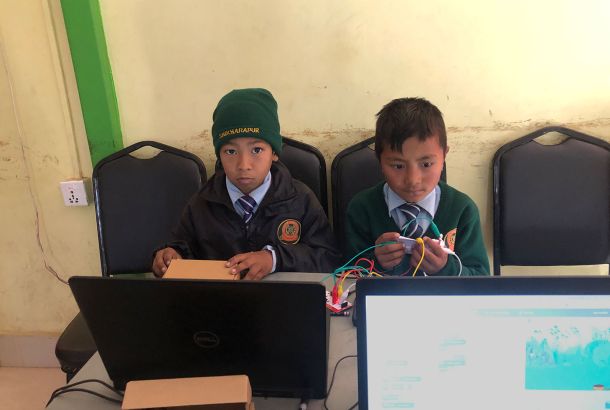
CoDES: Coding, Design, Engineering and Storytelling
How can we make coding fun, engaging and more relevant for young children?
Coding, Design, Engineering and Storytelling (CoDES) is an initiative to make creative coding more accessible and equitable for young children in Nepal; especially those in community and government schools. It does so by integrating coding with children’s local literature. CoDES tries to involve students in projects that reflect their own stories and traditions, using coding as a form of expression rather than just problem-solving. The project is the result of a collaboration between Karkhana Samuha and the Scratch Foundation to promote equity in coding through Scratch.
CoDES Curriculum
The CoDES curriculum is designed to help children learn Scratch and build meaningful projects based on children’s literature belonging to the local communities. The curriculum adopts a project based learning approach. Students initially work on simpler, prompt-based projects in each individual lesson. Towards the end, they work on a final, culminating project where they adapt stories into more complex animations, stories, games and other creative forms.
In the curriculum we have adopted the idea of coding as a literacy, developed by Prof. Marina Umaschi Bers, which supports young learners in developing new ways of thinking, and new ways of expressing themselves.
CoDES Student Guide
CoDES student guides are designed to serve as self-exploratory, interactive resources for students. To do so, we have put great care in keeping the language simple, using minimum text, and making suggestions through intuitive use of images.
The need for such a resource was born out of our observations of typical Scratch classes in Kathmandu, where most of the teacher’s time is spent in moving from one student to another, explaining the tools and concepts, and troubleshooting their problems. By providing each student with an interactive guide which they can use to learn at their own pace. This also frees up teachers from the need to respond constantly.
CoDES Lesson Plans
The lesson plans are companions to the student guide, meant to be used together. These are designed to help teachers with two things - implementing the student guides effectively, and learning Scratch (for those new to the platform.) Each lesson plan has curated videos that explain the coding concepts introduced in the lesson, and other tutorials teachers might need.
Our aim with the lesson plans is to reduce the preparation time for teachers, and to make lesson facilitation easier. To get the most benefits out of the lesson plans, we recommend teachers to read the educator guide blogs.
CoDES Lessons
- Lesson 1: Stories and Scratch
- Lesson 2: Make Characters Dance
- Lesson 3: Make Characters Talk
- Lesson 4: Modify Sprites
- Lesson 5: Make Characters Move
- Lesson 6: Make Characters Move II
- Lesson 7: Connection of Sprites
- Lesson 8: Sensing Things I
- Lesson 9: Sensing Things II
- Lesson 10: Sensing Things III
- Lesson 11: Story Mapping
- Lesson 12+: Final Project
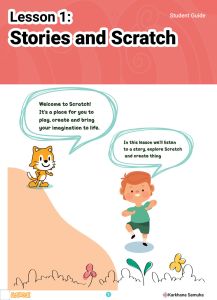
Students listen to a story being read to them and reflect on the elements of a story. They explore Scratch interface and use sprites and backdrops to create scenes from stories.
This lesson was created in collaboration with Srijanalaya.
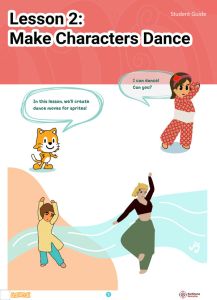
Students use loops and costume blocks to make characters dance. They create dance routines with not just sequential moves but by deliberately selecting moves to repeat.
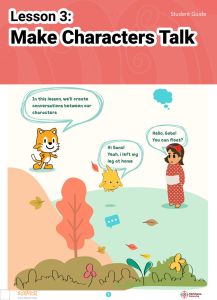
Students make characters have conversation by timing the wait blocks. They also match the expression and gesture of the characters with the conversation. They also use appropriate sound if possible.

Students explore the sprite editor and learn to modify existing sprites. They also learn to create the sprites they need. They work on given challenges to learn the skills and tools.
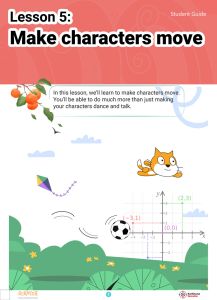
Students create simple animations that require you to make sprites move from one location to another. They use the backpack to get sprites from other Scratch projects.

Students learn to create more complex animations where the characters move their body parts, they make use of graphic effects, and combine elements of speech and sound. They also explore the concept of parallel programming.
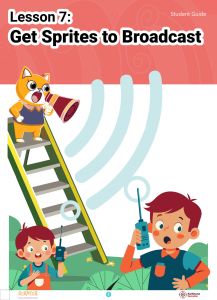
Students use broadcast blocks to get sprites to communicate among each other and sync events in the story.

Students create interactive stories where the user or viewer has to move the story forward by performing certain actions.
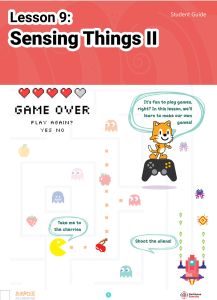
Students learn to create simple games using conditional blocks. They make use of if conditions and sensing blocks.
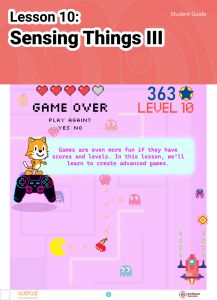
Students learn to create more complex games through the use of variables. They learn to add levels and scores.
Students engage with a story mapping activity and delve deep into a story. They create a story based on the given prompts and use Scratch to express the story through animation, storytelling or games.
This lesson was created in collaboration with Srijanalaya.
The remaining classes in this course will be for students to build their projects based on the story they created and mapped in today’s lesson.
Educator Blogs
As a part of our design process for CoDES, we conducted pilot classes in three community and government schools in Lalitpur. This blog is the result of qualitative research we conducted during the pilot. There are plenty of good blogs, books and videos available that do an excellent job at educating people on the philosophy, pedagogy, and importance of Scratch. So we aren’t trying to create another resource that attempts to do the same. This guide aims to show, through classroom anecdotes, the environment of Scratch lessons in Nepali classrooms. It focuses on helping the educator understand the challenges and opportunities that exist in these lessons.
This series of blogs captures our experience of piloting Scratch for 72 students between ages 8 to 11 years old. The 3 teachers who participated in the pilot were new to Scratch and learnt to use it while preparing for the lessons.
